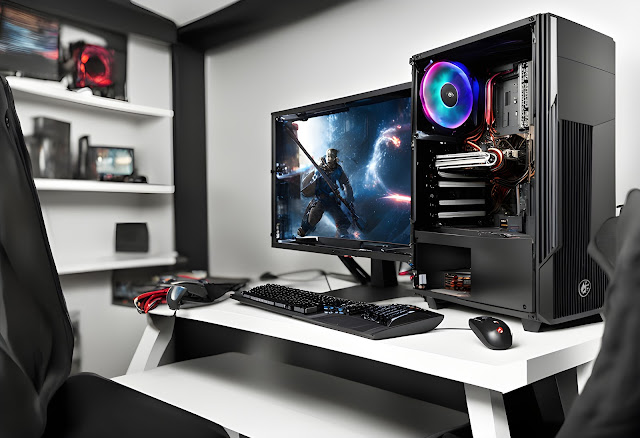How do build a best-budget gaming PC?
There isn't a single "best" budget gaming PC built since prices and needs can vary. However, I can guide you through creating the optimal build for your budget. Here's a step-by-step approach:
how do build a best-budget gaming PC
- Set a Realistic Budget:
- This is key. Factor in all parts (CPU, GPU, RAM, storage, motherboard, case, power supply) and peripherals (monitor, keyboard, mouse) Be common with current pricing. Popular budget ranges are typically $500-$800 and $800-$1200, but this can change.
Prioritize Components:
- CPU & GPU: Allocate more of your budget here. These are the main engines for gaming performance. Look for mid-range options like:
- CPUs: Intel Core i5 12400 or AMD Ryzen 5 5600X.
- GPUs: Nvidia GTX 1650 or AMD Radeon RX 6600 (for 1080p gaming).
- RAM & Storage: These are important but slightly less budget-critical.
- RAM: 16GB DDR4 is the standard for most games.
- Storage:
- Prioritize a 500GB SSD for the operating system (OS) and frequently played games.
- Consider adding a hard drive for mass storage later.
Research and Choose Parts:
- Use PCPartPicker [pcpartpicker.com] to:
- Compare parts and check for compatibility.
- Find deals on components.
- Look for benchmark reviews of CPUs and GPUs to understand their gaming performance at your target resolution (e.g., 1080p, 1440p).
Sample Budget PC Parts Breakdown (adjust based on research and budget):
- CPU: As mentioned above (i5 12400/Ryzen 5 5600X)
- GPU: As mentioned above (GTX 1650/RX 6600)
- RAM: 16GB DDR4
- Storage: 500GB SSD + (Optional) HDD
- Motherboard: Compatible with your CPU and has features you need (e.g., Wi-Fi)
- Case: Good airflow, enough space, consider aesthetics!
- Power Supply: Reliable PSU with enough wattage (around 500W for this range)
- Building the PC:
- Option 1: Do it Yourself (DIY):
- If you are comfortable with assembling components, it's a great learning experience.
- Many online resources and YouTube videos (YouTube: https://www.youtube.com/) can guide you step-by-step.
- Option 2: Seek Help:
- If you are comfortable with DIY, consider a friend or local computer technician for assembly.
- Option 1: Do it Yourself (DIY):
Additional Budget-Saving Tips:
- Consider Used Parts: Find reliable used parts from reputable sellers to save money.
- Sales & Bundles: Keep an eye out for deals and bundles on parts during sales events.
- Operating System: Windows 10/11 is popular, but free alternatives like Linux exist if your budget is extremely tight.
Remember, this is a roadmap. Research specific parts, compare prices, and don't hesitate to ask tech communities online for advice!






No comments